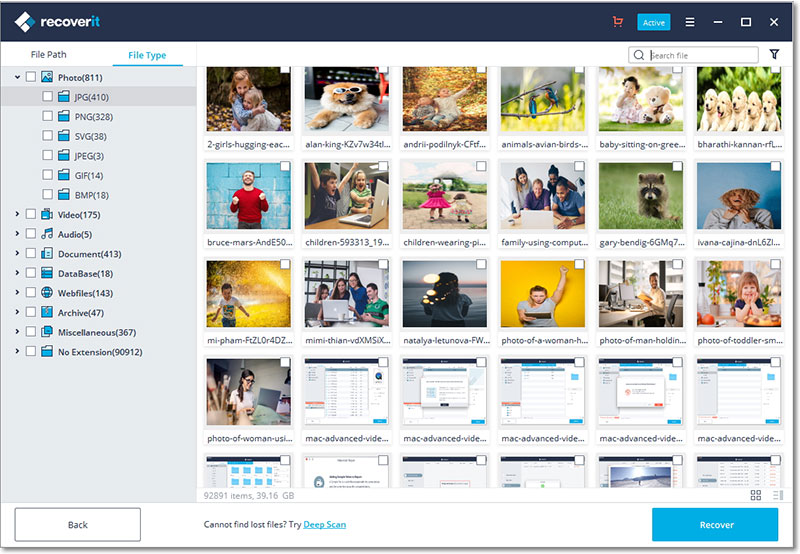Easy photo recovery software restores deleted and unreadable photos from digital cameras, smartphones, hard drives, and all types of flash cards. It can retrieve files from damaged flash cards even after the media storage device is formatted, and allows previewing of photos before recovery. The program is easy to use and guides you through all the stages involved in data retrieval. However, if you are a professional photographer or just a camera enthusiast, Easy Photo Recovery isn't the best program for retrieving your lost, corrupted or missing photos. The software scans devices at a very slow speed and takes hours to recover photos. We have created a list of top 5 Easy Photo Recovery alternatives that will surpass your expectations when it comes to the time taken to scan and recover all your photos.
Top 5 Easy Photo Recovery Alternatives for Windows
iSkysoft Data Recovery for Windows (it also has Mac version iSkysoft Data Recovery for Mac) offers maximum possible data recovery for lost, deleted, formatted or corrupted files, thanks to its powerful scanning algorithms. It features 4 data recovery modes that enable users to recover any file types from any devices, regardless of the causes of data loss. The software solves your data loss issues quickly and painlessly hence, highly recommended for everyone.
Why Choose This Easy Photo Recovery Alternative Software:

- You can pause/ restart the scanning process with one click.
- The found files can be previewed before recovery.
- A validity attribute allows you to determine whether a file is "Good" or "Bad" before recovery.
- Users can save the scan results when busy, and proceed with recovery when free.
- Lost files are retrieved in high quality and with original names/folders.
Step-By-Step Guide to Use This Easy Photo Recovery Alternative
Step 1. If you would like to recover photos from a camera, player, external drive or smartphone, use the original cable to connect it to PC. To retrieve data from a memory card, insert it in a card reader then connect the card reader to your computer. USB flash drives are connected directly to the computer's USB ports.
Use Firefox or Chrome to download the software. Double click or open the downloaded file to install it on your Windows PC. When the installation process is over, go to your desktop background and double click on the software icon to launch it. Then choose the file types that you want to recover.
Note: If you would like to recover data from a PC-based drive, you'll have to get another computer, download the software in USB flash drive and perform recovery while the program is installed in USB flash drive. This prevents permanent loss of your data through overwriting.
Step 3. When the scanning process is finished, the found contents will be displayed in another window and according to "File Type" and "Path". This is where you'll have the opportunity to preview your photos. To start recovery, mark the files (photos) in the list and select the "Recover" button at the bottom right corner of the software's interface to save the photos to the chosen path. Note that you shouldn't save the photos to the drive from where you lost them.
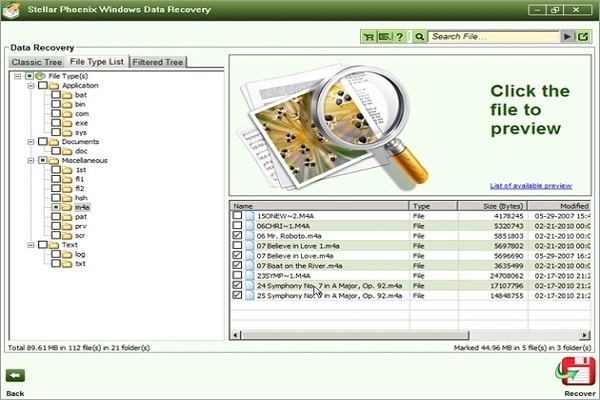
2# Stellar Phoenix Windows Data Recovery
This is a Do-It-Yourself software that lets you recover deleted and lost data from local drives or external drives. It features a powerful scan engine and an advanced find option that enables you to retrieve any file that you have ever lost. The program is compatible with all Windows operating systems and supports NTFS, FAT, and exFAT file systems.
Pros:
- Apart from photos, the software can recover other 300+ file types.
- It successfully scans large drives of over 2TB+ capacity.
- The professional version supports cloning or imaging of hard drives which helps back up hard drives data and secure users against any data loss.
Cons:
- The scanning process can't be paused.
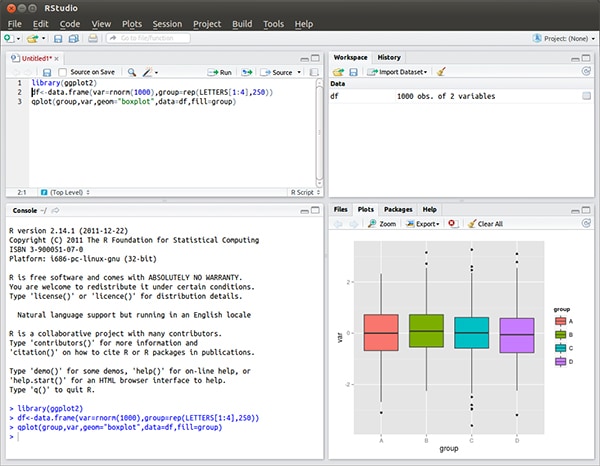
3# R-Studio
This is a comprehensive data recovery program that's well known for its ability to retrieve data lost to virus & malicious attacks, operating system crash, hardware failures and more. It functions on both internal and external drives and ensures that your data is restored even if the partitions are damaged, deleted or formatted. Advanced algorithm for raw file recovery lets you search for file signatures and find files that are not recognized in the file system metadata.
Pros:
- The software's flexible parameter settings give users absolute control over data recovery.
- It allows you to rename files back to the original file names.
- Recovers compressed files, encrypted files, and alternative data streams.
Cons:
- The program doesn't guarantee complete recovery of lost files.
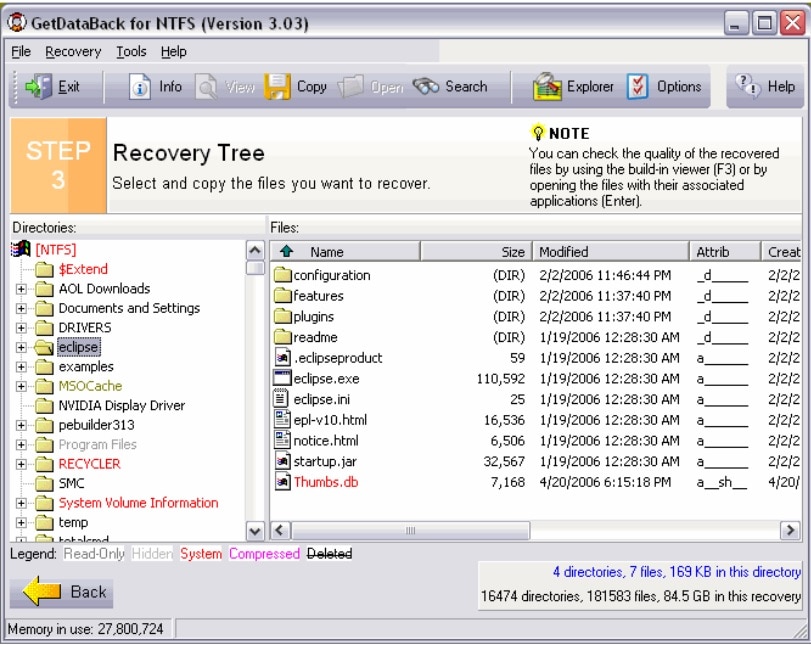
4# GetDataBack Simple
GetDataBack Simple from Runtime Software is designed with the newest technology on data recovery. Anyone can use this simple software to recover lost files since it comes with a clean interface that guides users through the data recovery process. The data retrieval process is safe, easy and fast, and even large files are retrieved in just a few minutes.
Pros:
- Restores lost data with file names and directory structure.
- It's free to try, and when you purchase it, you get free lifetime updates.
- The software uses a read-only process to scan for lost files and doesn't attempt to write to the drive you want to recover files from.
Cons:
- The interface can't be customized, and the unregistered version only allows for previewing of the recoverable data.
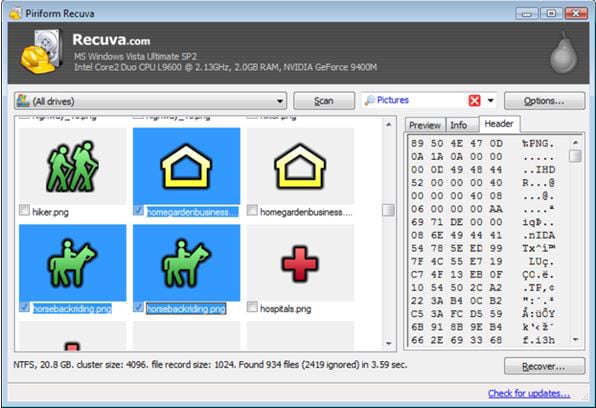
5# Recuva
This is a great software from Piriform that recovers pictures, documents, music, emails and other file types from Windows PC drives, external hard disks, USB sticks, recycle bins, MP3 players, memory cards and digital cameras. Recuva downloads and installs easily, especially if you have a fast and stable internet connection. It also features an overwrite feature that allows you to erase deleted files permanently.
Pros:
- The software features an easy user interface.
- It can also retrieve files from newly formatted or damaged disks.
- The advanced deep scan mode increases the data recovery success.
Cons:
- The program doesn't really find all the lost files.





